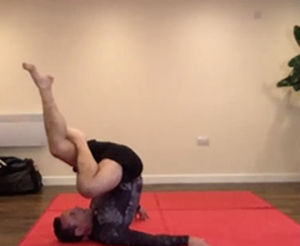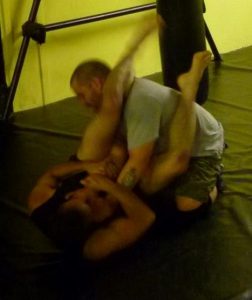The Triple Closed Guard Threat (diary entry)
- jamie03066
- Jul 12, 2022
- 3 min read


11.06.2022
We finished this course on ground fighting/submission grappling with work on the three major submissions from the closed guard: the arm-bar, the triangle choke and the omoplata. These are three submissions that can serve as an effective combination of traps, each one being easy to transition from each other.
We warmed up with our usual dynamic stretching and sport specific muscle activation exercises. Then we plunged straight into the technical material.
I began with the standard arm-bar. This was first trained used the flow drill base: block the hips and pin the arms with the knees and trap the wrists. From here the fighter twists his hips and hooks his top leg over the opponent's neck whilst isolating the opposite side arm and straightening his core under said arm. The move can be assisted by pushing the opponent's head over. Wrist control is important throughout this submission and I like to swap from using both hands to trap the wrists to one during the execution of the leg hook. The bottom leg should never remain hanging and is best hooked under the opponent's same side arm.
There is a more simplistic alternative to the basic armbar I learnt when doing my Keysi MMA instructor course back in 2010. This involves climbing the closed guard up very high and positioning tight under a trapped arm.
We then moved onto the triangle choke, another very high percentage submission technique, which often works as a single attack but can nicely serve as a counter-move to an opponent pushing forward against the arm-bar. The technique is set up using a push/pull seesaw action with the opponent's hands, stuffing one behind the fighter's attacking leg and pulling the other one forward to help break the posture. Timing is crucial in order for the fighter to stuff the hand and hook the attacking leg around the opponent's same side neck exerting pressure on the carotid artery. I like to secure the hold early at this point by just crossing the ankles but many fighters are content with just squeezing the non-hooked leg into the opponent's side whilst working to get the attacking leg in a horizontal position. Regardless of your preference the next stage is often helped by shifting the hips towards the attacking leg side and pass the opponent's trapped arm over to their opposite side. This is best done by pushing at the elbow or tricep. An option from here is to grip the attacking ankle of the attacking leg to secure the horizontal position of the triangle in readiness for the free leg to hook over the leg. The submission is completed by straightening up the core again and, if needs be, shifting more over to the opposite side so that the move is completed at a 45 degree angle. This isn't to say the technique cannot be performed from a square-on position and the head pulled down, but this angled execution as described above is the "pure" technique version.
Finally, we covered the omoplata shoulder lock. This is an effective submission that is often executed when the opponent on top takes a more bladed posture. The fighter hooks their attacking leg under the opponent's armpit and over their shoulder. They triangle their legs with a straightened spine whilst holding onto the trapped arm. Rolling forward it is important to secure a single arm grip around the opponent's waist so that they cannot roll to escape. From this sat up position the fighter can either posture up, effectively in the yoga pigeon asana, to submit with a shoulder lock (a type of leg variant of the kimura submission hold) or execute a pronated wrist-lock or even reach back to perform an ankle lock.





















Comments